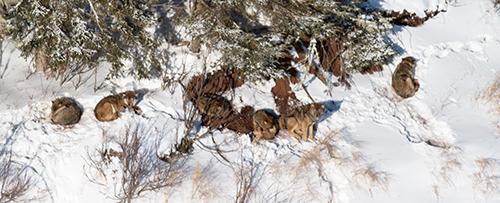Ice Bridge to Isle Royale
It’s happened. An ice bridge has formed from the mainland of Canada out to Isle Royale in Lake Superior. This could be good news for the Isle Royale wolf population or bad news. The population of wolves is very low so the hope is more wolves will move out to Isle Royale but there is the possibility the ones who are there will leave. Only time will tell.
Ice bridge to Isle Royale is complete, will new wolves cross it?
The last time I checked, the ice bridge to Isle Royale had not fully formed, but there’s an ice bridge now.
Michigan Technological University’s Rolf Peterson confirmed it in an e-mail to me last night.
“There’s been a good ice bridge for the past 10 days.”
As I mentioned in my earlier post, an ice bridge between Isle Royale and the mainland of Canada has been happening much less frequently as the climate warms. The chances of one forming in any given year is less than 10%.
The bridge is important because it allows for the possibility of new wolves to travel from Canada onto the island.
The island is home to the longest running predator-prey study in the world. Researchers from Michigan Tech have been chronicling the wolves for more than 50 years, but the number of wolves on the island has been dropping.
It’s led to questions over what the National Park Service should do if wolves disappear from the island.
But there might be hope. Researchers heard wolf pups last summer, and they have observed the pups during this year’s winter study:
The West-end trio has become a bonafide pack. The alpha pair has succeeded in doing what all wolves dream of, and what most never realize. They’ve become parents and their children have survived to see their first winter. Just nine months ago, when they were just days old, their pups would have been blind, deaf, and just a bit larger than your fist. Look at them now. They can walk farther, run faster, endure more cold, and eat more meat than you or I could ever imagine.
Here’s a shot of the pack:



Leave a Reply
You must be logged in to post a comment.